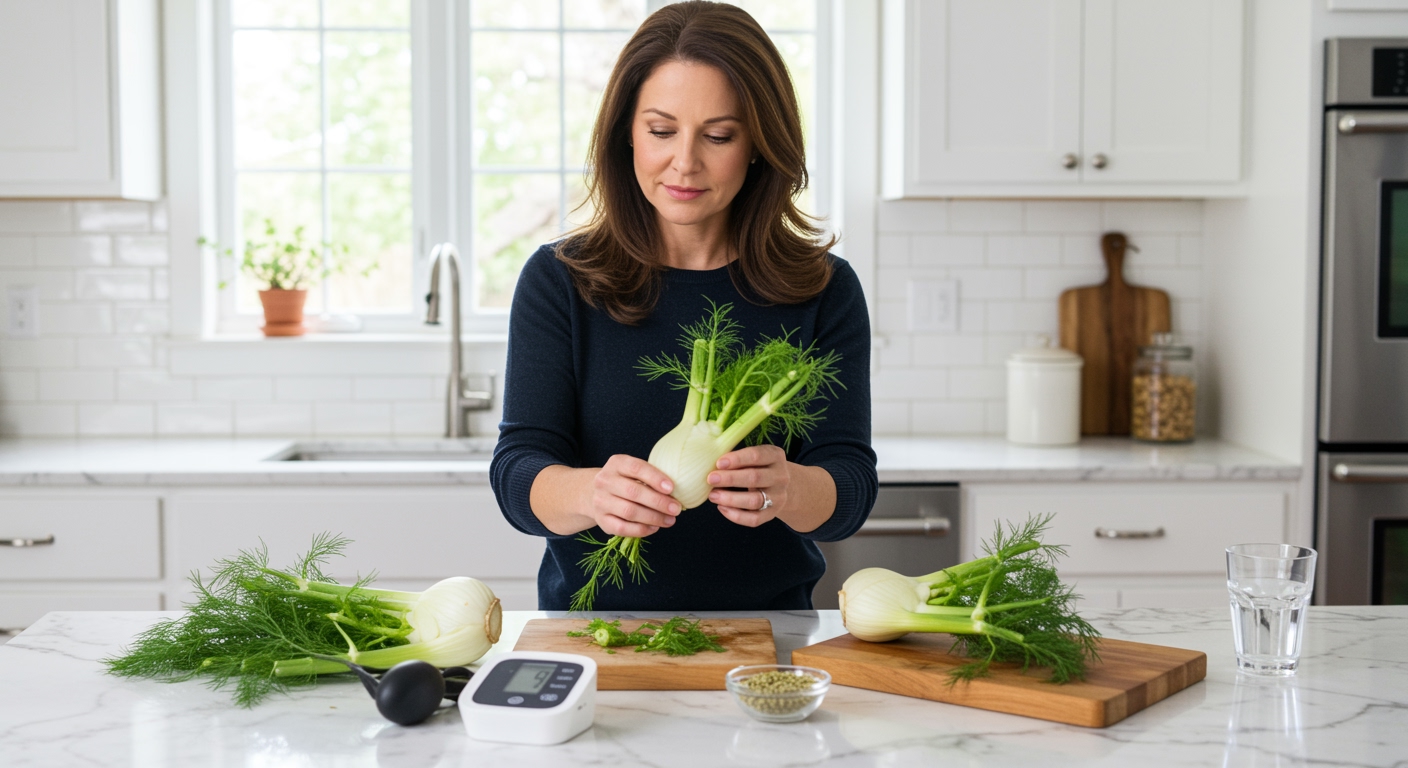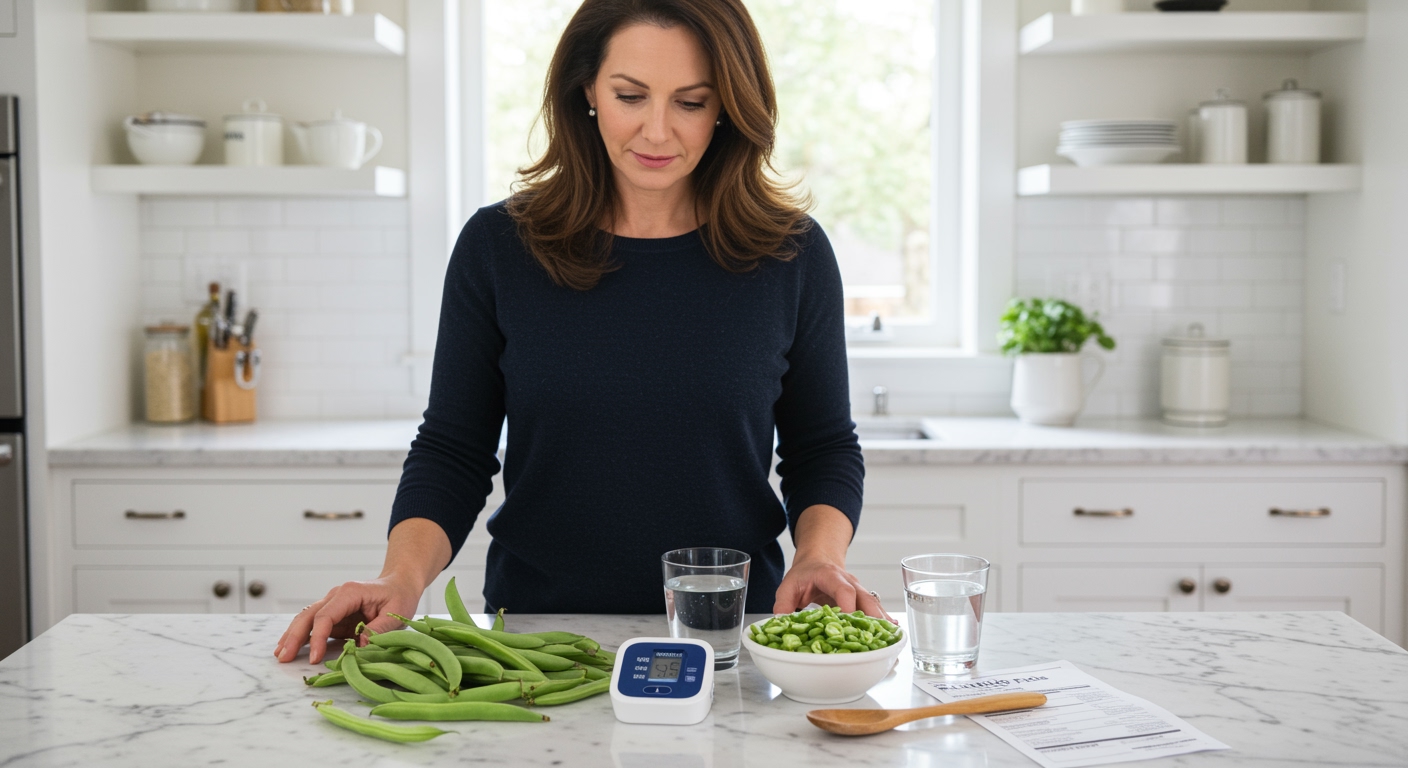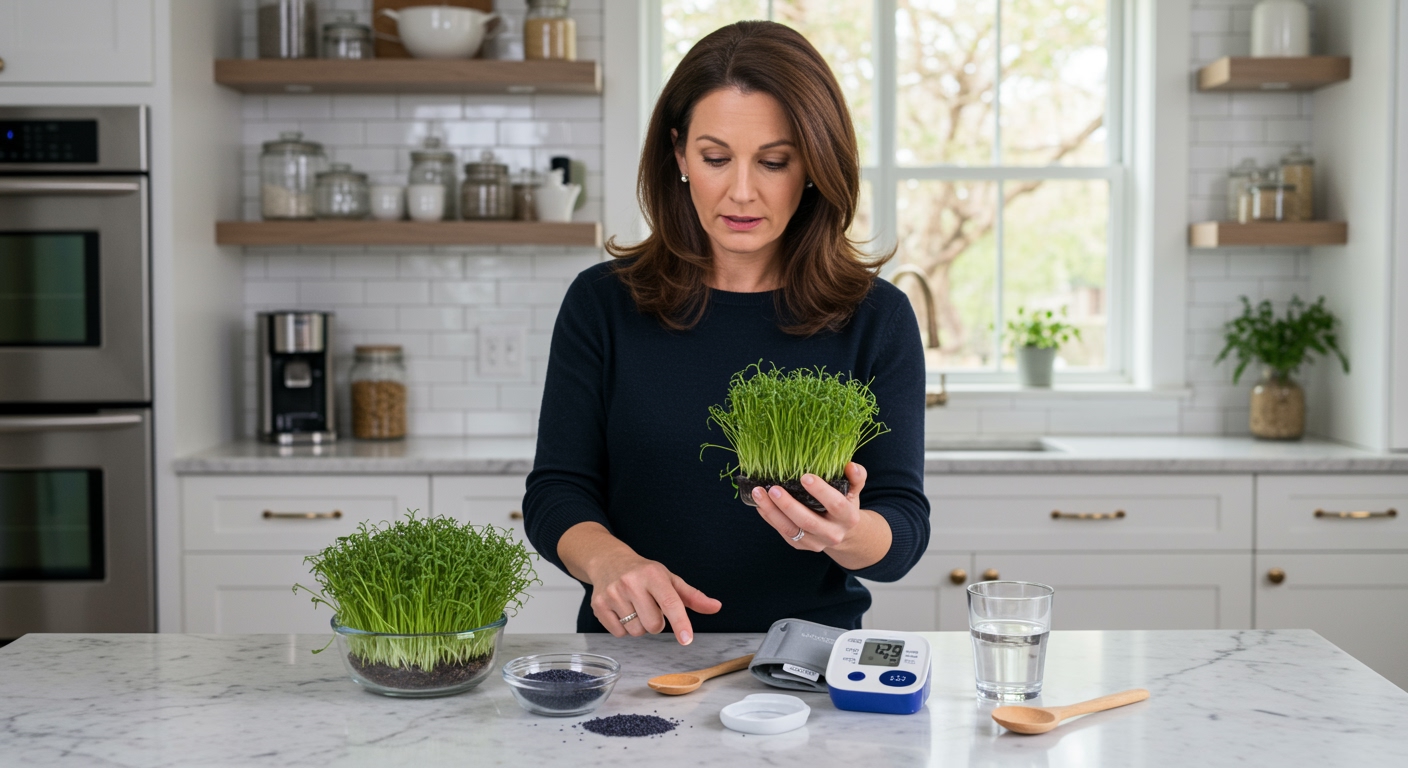✪ Key Takeaway: Low blood pressure patients can safely consume fennel fronds in normal cooking amounts but should monitor their response carefully.
Introduction
You reach for those feathery green fennel fronds at the grocery store and suddenly wonder if they are safe for your low blood pressure.
This question comes up because many people with hypotension worry about foods that might lower their already low blood pressure even further.
Hi, I am Abdur, your nutrition coach and today I am going to explain everything you need to know about fennel fronds and low blood pressure so you can make informed decisions about this aromatic herb.
What Are Fennel Fronds and How Do They Affect Blood Pressure?
Fennel fronds are the feathery green leaves that grow from the fennel bulb and look similar to dill.
These delicate herbs contain potassium, which plays a crucial role in blood pressure regulation by helping your kidneys remove excess sodium from your body.
However, the potassium content in fennel fronds is moderate compared to other foods like bananas or spinach.
Research shows that fennel contains compounds called flavonoids that may have mild vasodilatory effects, meaning they could potentially relax blood vessels.
The key point is that these effects are generally mild when fennel fronds are consumed in typical culinary amounts.
Your body processes these compounds gradually, and the impact on blood pressure is usually minimal unless you consume large therapeutic doses.
✪ Fact: Fennel fronds contain about 414mg of potassium per 100g, which is moderate compared to other leafy greens.
Should You Completely Avoid Fennel Fronds With Low Blood Pressure?
The answer is no – you do not need to completely avoid fennel fronds if you have low blood pressure.
Most people with hypotension can safely include small amounts of fennel fronds in their regular cooking without experiencing significant blood pressure drops.
The typical serving size of fennel fronds in cooking is about 1-2 tablespoons chopped, which contains minimal amounts of blood pressure-affecting compounds.
Your body needs a balanced intake of various nutrients, and completely eliminating nutritious herbs like fennel fronds may do more harm than good.
However, you should be cautious about consuming large quantities or concentrated fennel preparations like teas or supplements.
The difference lies in the dosage – culinary use versus therapeutic use creates entirely different effects on your cardiovascular system.
✪ Pro Tip: Start with small amounts and monitor how your body responds before increasing your fennel frond intake.
What Symptoms Should You Watch For?
Pay attention to your body when you first introduce fennel fronds into your diet if you have low blood pressure.
Watch for symptoms like dizziness, lightheadedness, or feeling faint after eating foods containing fennel fronds.
Some people may experience fatigue or weakness if their blood pressure drops too low after consuming certain foods.
Keep track of your blood pressure readings if you have a home monitor, especially during the first few times you eat fennel fronds.
Remember that these symptoms can have many causes, so do not automatically blame fennel fronds if you feel unwell.
The timing matters too – if symptoms occur within 1-2 hours of eating fennel fronds, there might be a connection worth discussing with your healthcare provider.
✪ Note: Keep a food diary to track any patterns between fennel frond consumption and your symptoms.
How Much Is Safe for Low Blood Pressure Patients?
For most people with low blood pressure, 1-2 tablespoons of chopped fennel fronds per day is generally considered safe.
This amount provides flavor enhancement without delivering significant quantities of blood pressure-lowering compounds.
You can safely use fennel fronds as a garnish on salads, soups, or fish dishes without worrying about major blood pressure effects.
Avoid consuming concentrated forms like fennel frond teas, tinctures, or supplements unless your healthcare provider specifically recommends them.
The cooking method also matters – fresh fennel fronds mixed into dishes are generally safer than consuming large amounts of fennel tea or extracts.
If you take medications for any condition, discuss fennel frond consumption with your doctor to ensure there are no interactions that could affect your blood pressure.
✪ Pro Tip: Mix fennel fronds with other herbs to dilute their concentration while still enjoying their unique flavor.
The Bottom Line
Low blood pressure patients can safely enjoy fennel fronds in normal cooking amounts without major concerns about further lowering their blood pressure.
Smart nutrition means understanding your body and making informed choices rather than avoiding foods out of fear.
I would love to hear about your experiences with fennel fronds or any questions you might have about managing low blood pressure through diet – please share your thoughts in the comments below.
References
At NutritionCrown, we use quality and credible sources to ensure our content is accurate and trustworthy. Below are the sources referenced in creating this article:
- Medical News Today: Fennel: Health benefits, facts, research
- PubMed: Fennel and blood pressure research
- BBC Good Food: Health benefits of fennel
- Lybrate: Fennel benefits and side effects





